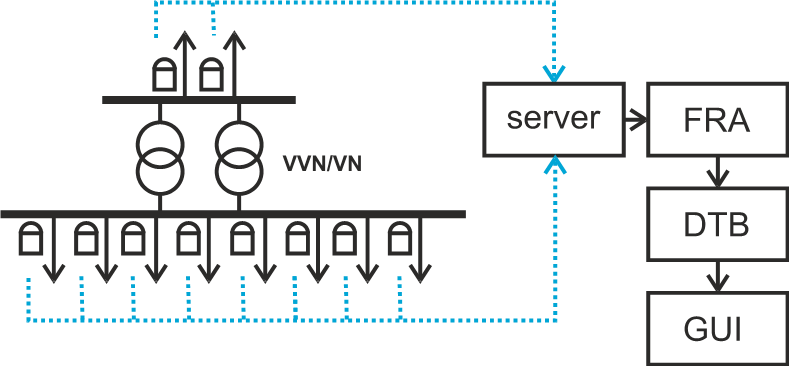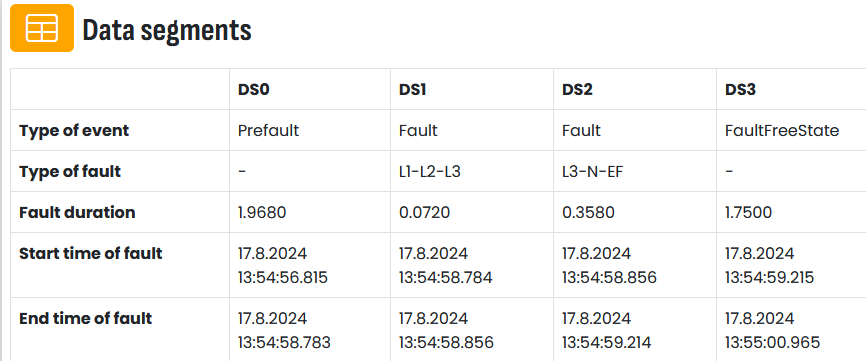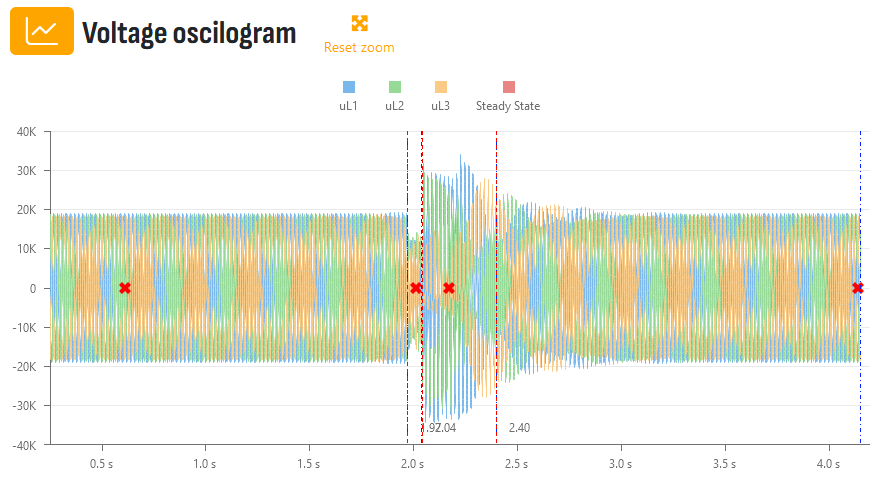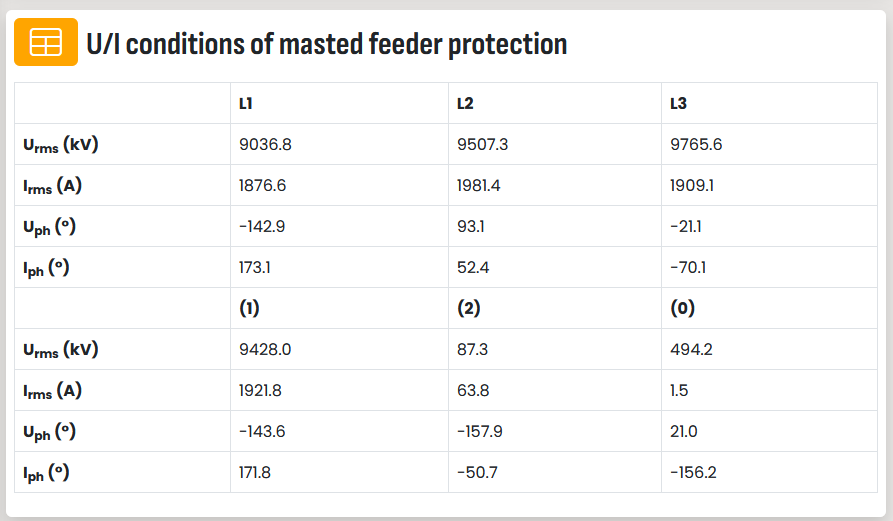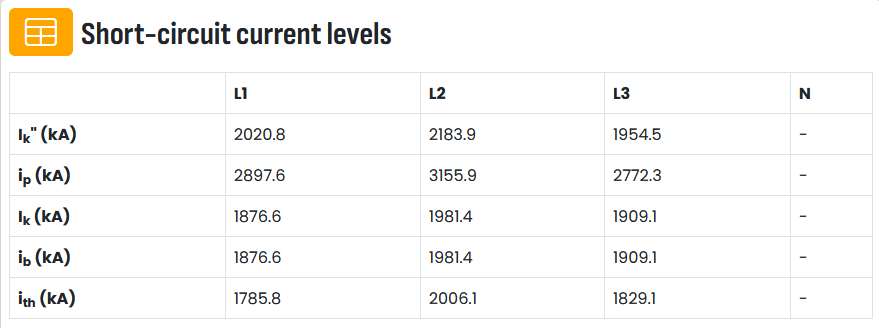FRA - System for Autonomous Fault Record Analysis in Distribution Networks
Digital Feeder Protections at HV and MV Substations have long since become standard, and most of these devices also support automatic recording of fault events. These recordings can then be used for fault analysis and for obtaining statistical data that impacts the reliability and safety of the operated network. However, the process of retrieving these records is still often not automated, and their analytical processing is, in the vast majority of cases, performed manually. Yet fault records contain a wealth of valuable information, and if we are able to retrieve and analyze them immediately after a fault occurs, they can significantly assist in localizing the affected area and reducing the time needed to find it.
The FRA system provides a comprehensive solution for both the automatic centralization of fault records from all feeder protections in the distribution network and their detailed analysis immediately upon retrieval. It calculates a wide range of important parameters. In the case of short circuits, and in combination with network topology information, the system can determine the likely fault location(s). For double-fed HV lines, localization is carried out using records from both feeder protections. All calculated data is stored in a central database, which is then used for statistical evaluation of monitored indicators.
FRA SYSTEM DESCRIPTION
The FRA system has been designed as a modular platform composed of functional blocks and units that can operate as a standalone autonomous system, while also allowing selected components to be easily integrated into broader data acquisition and distribution network control systems. The FRA system can incorporate any HV or MV feeder protection device capable of generating fault records in the COMTRADE format (or any other documented standard for which an import function can be developed) and supporting data download via IEC 61850, IEC 60870-5-104, FTP, or SFTP protocols—or offering the option to transfer data via shared storage (e.g., using additional hardware or software provided by the protection device manufacturer).
For the purpose of fault record centralization at the substation level, new communication functions have been developed for RTU7M unit communication cards, which are now capable of downloading records from dozens of protection devices via the IEC 61850 protocol. These records are then forwarded to the FRA system using communication methods compatible with the available infrastructure, while also meeting cybersecurity requirements.
The core functionalities of the FRA system currently include:
- Automatic download and centralization of fault records
- Automated analysis of fault records for the purposes of:
- Fault localization on double-fed HV lines
- Event separation and estimation of characteristic fault parameters
- Statistical evaluation to quantify the risk of electric shock
- Logging and assessment of actual short-circuit currents
- Generation of fault reports
- Logging of voltage events
- Evaluation of fault risk levels
- Tracking of affected network elements
- Estimation of ground fault currents for all types of short circuits (residual current ZS)
Fault localization on double-fed HV lines also addresses:
- Correction of arc fault influence in LN faults (estimation of synchronization angle)
- Elimination of the need for knowledge of zero-sequence components for fault localization
- Calculation of relative distance for double-fed lines based on a numerical model of the affected line
- Ability to account for line inhomogeneity (to be implemented in the future)
Logging and assessment of actual short-circuit currents also includes:
- Generation of fault reports
- Tracking of elements affected by the fault (monitoring of breaker operations during faults)
- Logging the frequency of feeder breaker operations (tripping/closing) during short-circuit events
- Auto-reclose (AR) statistics
More detailed information can be found in the following documents:
Presentation of the FRA system web interface
Presentation of the FRA system web interface – statistics module
Components and Licensing of the System
To ensure data download from protections at substations, it is possible to purchase a suitable RTU7M assembly from ELVAC, such as the RTU7MC3 version or other models that meet the required power voltage ranges and the number and types of communication interfaces.
The licensing of the FRA system is based on a base license for the server and licenses for connected devices that provide fault records (protective relays), according to their actual number. The FRA software provides a web interface for regular users, an administrative tool (Windows application) for system configuration and maintenance, and also an integration API for connecting with other software systems used by the network operator.
The FRA system was developed with support from TAČR under the Théta program (TK04020230) and is the result of collaboration between ELVAC SOLUTIONS s.r.o. and VUT Brno. The product license is provided by ELVAC SOLUTIONS s.r.o., and ELVAC a.s. has included the FRA system in its portfolio of energy solutions, where it complements other offered products and solutions.
